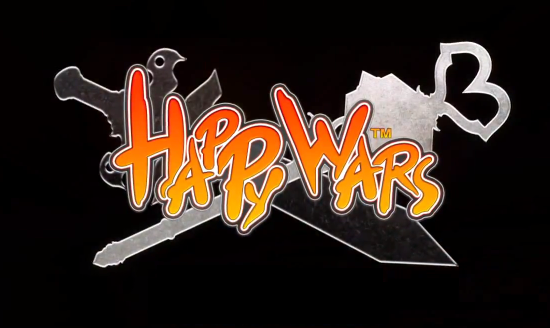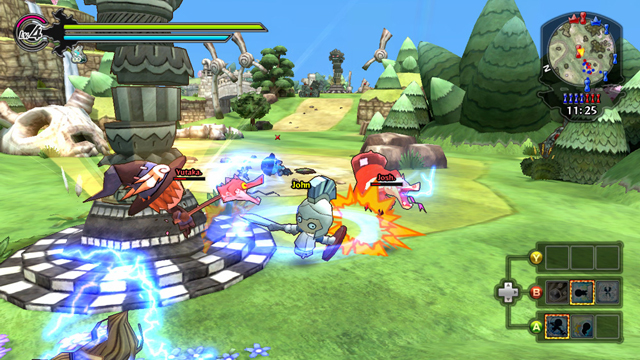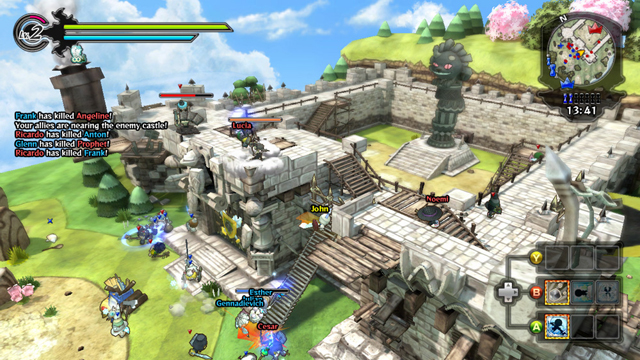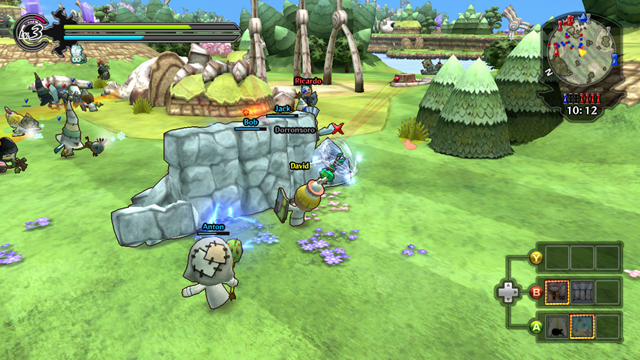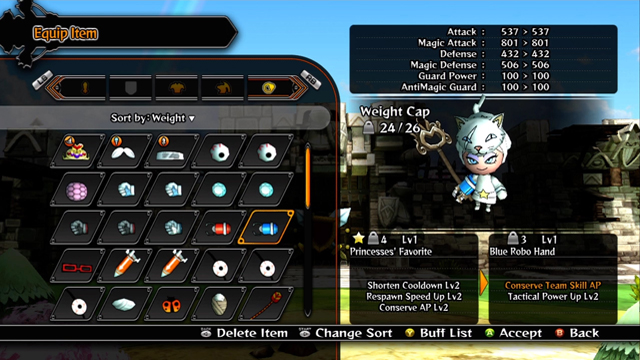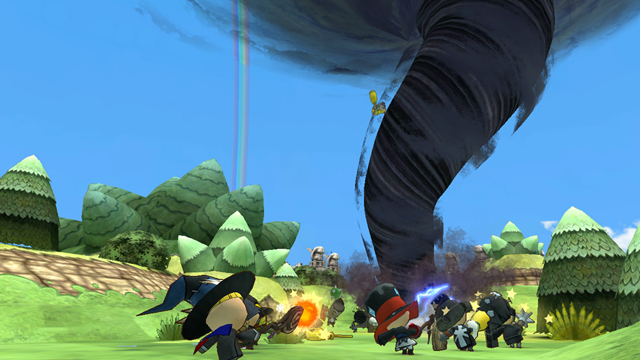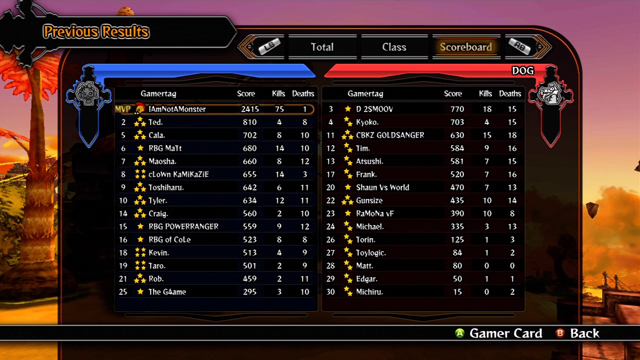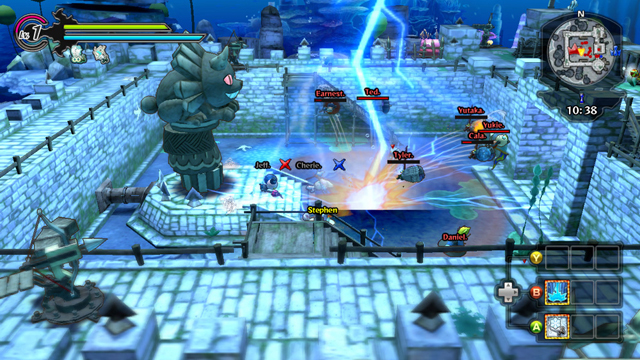Happy Wars review (XBLA)
Happy Wars was developed by Toylogic and published by Microsoft Studios. It was released on October 12, 2012, free of charge. A copy was provided for review purposes.
There was a time when free-to-play games were regarded as the second-class citizens of the industry, relegated to social networking sites and mobile phones. While those days are over, free-to-play gaming never quite made it to Microsoft’s console until now, raising questions as to whether the model could even survive in a market that thrives on the bigger and better. Happy Wars’ delightful online action is the first to provide an answer to that question – and it’s a good one.
Here’s what we liked:
Accessibility – Happy Wars’ strongest feature is its accessibility. It’s easy on the eyes and wreathed in a kind of cuteness that proves it doesn’t take itself too seriously, and neither should you. That’s reassuring for a title designed to cultivate competition, an environment that can be inherently intimidating. This benign atmosphere is supported by an intuitive control scheme that forsakes complex button combinations in favor of a streamlined one-to-one system with plenty of visual reminders. Happy Wars is a competitive multiplayer title intelligently designed for people who don’t play competitive multiplayer titles.
Though you can dabble in a few single player story missions and online cooperative, eventually you’ll have to set foot in the massive, thirty-player competitive arena. Toylogic takes the sting out of the experience with heavy emphasis on teamwork and versatility, rather than the lone wolf. Happy Wars doesn’t cater to a particular play style, allowing you to make meaningful contributions to the war effort with any class – the warrior, cleric or mage – through specific skills and the interactive environment. It’s equally acceptable to hang back and heal your teammates, jump on a turret and defend the castle walls or charge into the fray to rack up the kills; as long as you’re contributing, you’ll be rewarded.
The rules of engagement are straightforward. You and your team charge forth from your castle in a bid to breach the opponents’ and destroy their Big Tower. On the way you’ll fight for control over specific towers that serve as additional respawn locations once captured. Though it’s possible for a crack-squad of knowledgeable players to infiltrate a lightly guarded fortress, most matches will consist of the two armies smashing into one another until the battle ends up on someone’s doorstep. In this respect, Happy Wars cultivates success through numbers and group activity, rather than just the efforts of the insanely skilled.
Customization – Happy Wars, like many free-to-play titles, capitalizes on our love of personalization and as such offers a suite of unique ways to do so. Each character-class can be tailored to your preference through swappable eyes, mouths, hairstyles and color combinations. The changes are merely cosmetic and the more creative pieces must be purchased, but it’s a fun feature even if that appearance ends up covered by bulky equipment.
The real customization comes by way of upgradeable and modifiable equipment that can be molded to fit your needs. By spending extortive amounts of Happy Stars (earnable in-game currency) you can increase the level of an item and its stats or affix powerful modifiers that grant skills and benefit your character. With enough time and funds you can truly create a set of equipment perfectly suited to your style.
Surprising Depth – Beneath Happy Wars’ titular disposition swirls a complex layer of strategy that can be easily overlooked based on the game’s lighthearted aesthetic. Once you’ve dedicated a modest amount of time to the otherwise straightforward gameplay, a kind of metagame can be found within each match. Players race for strategic positions, locking down bridges and chokepoints where enemies can be easily knocked into oblivion. A teammate might purge your afflictions, empower you with magic or ignore you completely in order to activate a rockslide, stunning the enemy just long enough to finish constructing a crucial tower.
Once you understand the inner-workings of the six maps, an underlying network of checks and balances between classes and team tactics becomes apparent – and like a massive, colorful game of chess, can be exploited once you’re able to predict your opponents’ next move. Happy Wars’ skirmishes might not be as infinitely complex as more hardcore offerings, but there’s a feeling of triumph to be had when you read the subtext of an unfolding battle and adapt, hurling a tornado into the path of your enemies with devastating results.
Here’s what we didn’t like:
Netcode – The crux of Happy Wars, the multiplayer experience, is ultimately hindered by a lengthy matchmaking process that precedes each battle. The system endeavors to populate two full teams whenever possible, but spends an exhaustive amount of time searching for opponents and allies, connecting to each of those players, and finally confirming those connections, before you’ll ever see a loading screen. In a best case scenario this process takes two minutes, but can easily last twice that long, sometimes more.
To compound matters, that last connectivity hurdle seems to be the most restrictive. Regularly you’ll find your matchmaking purgatory nearing completion only to witness half the roster blink out of existence at the last possible moment. Worse still, you end up on the wrong side of that connectivity hiccup, greeted by the phrase, “The game session has been aborted because you have lost connection with other players,” before you must manually restart the process. This scenario can occur multiple times before you finally get into a game and with a frequency that’s just unacceptable – there’s no other word for it.
Bots – That connectivity crapshoot generally equates to ample roster space on both sides of the conflict, quickly populated with artificial intelligence in order to preserve team balance. Happy Wars’ bots are, for the most part, generally effective in going where they’re needed, following commands and swarming opponents en masse. In fact, if it weren’t for their generic names punctuated with a single period, it would be easy to mistake them for new players, just learning the ropes.
Given enough time, their behavioral patterns become easy to spot and exploit. It’s not uncommon to flee from a skirmish, pursued by a mob of automatons, only to lead the pack into an obvious chokepoint where they can be obliterated in one righteous maneuver. In the bigger picture, that lack of foresight and ingenuity often means the difference between a crafty victory and a crushing defeat when your team is comprised almost entirely of bots. Despite their vacancy, Happy Wars’ digital seat-fillers play an important role in salvaging a match when teams are decimated by network instability, but a clever player won’t have any difficulty capitalizing on their predictability.
Microtransactions – Happy Wars is infested with chances to convert real-world money (Microsoft Points) into Happy Tickets. Aside from the Inception-esque practice of purchasing digital currency in order to purchase digital currency, the game employs all the standard tricks to shuffle you towards a monetary investment in that inevitable moment of weakness. Toylogic doesn’t shy away from that fact. It’s made perfectly clear they’re going to tempt you with cool items and instant gratification, every step of the way.
Understanding that this optional buy-in is the only form of revenue the title will generate makes it easier to overlook Happy Wars selling everything but the kitchen sink. Still, some tactics are harder to swallow than others – like devaluing the earned in-game currency (Happy Stars) to a point where just a few Tickets equal the purchasing power of literally thousands of Stars. It’s not a problem, per se, because you can slog it out in the pits to earn more Stars, but at such a ridiculous ratio it can leave a sour taste in your mouth when you’re just a few hundred Stars short of that next upgrade.
If you decide to take the plunge and purchase Happy Tickets, Happy Wars provides a variety of ways to spend them outside of that criminal exchange rate. Randomly selected items constantly rotate through the Item Shop along with premium packages consisting of specialty equipment. You can even purchase booster packs full of “Happy Cards” that contain a combination of standard and premium items, if you’re feeling lucky. These premium items can level the playing field for new players that find themselves amidst established, well–armed opponents, but with a little time and patience comparable gear is easily obtained absolutely free.
Though network troubles and predictable A.I. keep Happy Wars from being one the best multiplayer experiences on Xbox Live Arcade, it’s chock-full of character, charm and fantastic fun. It packs enough content into the strategic gameplay and impressive customization that Toylogic could have easily priced it alongside comparable digital offerings. Happy Wars is the first free-to-play title to make its way onto Xbox Live Arcade, so we can’t recommend you literally purchase it. Instead, view our score as an indication that in a landscape full of amazing digital games, this completely free title is well worth your time.
Score: Buy It

